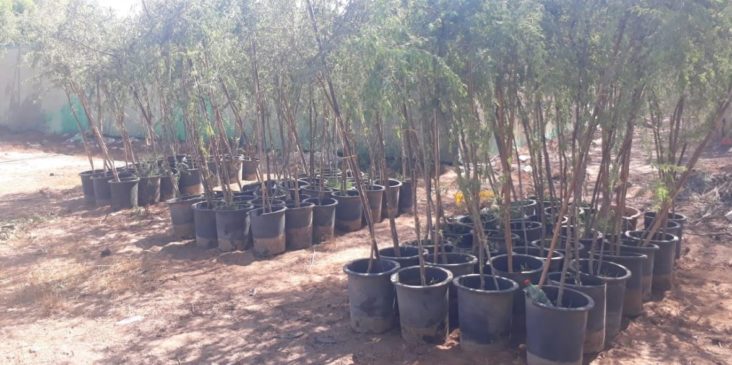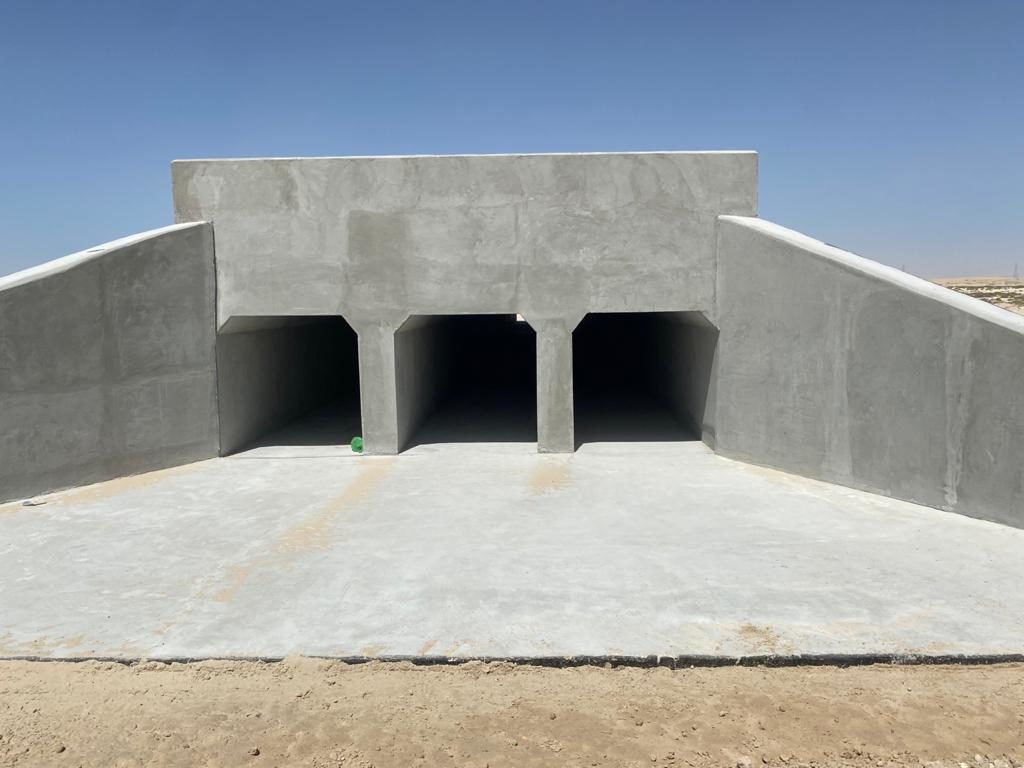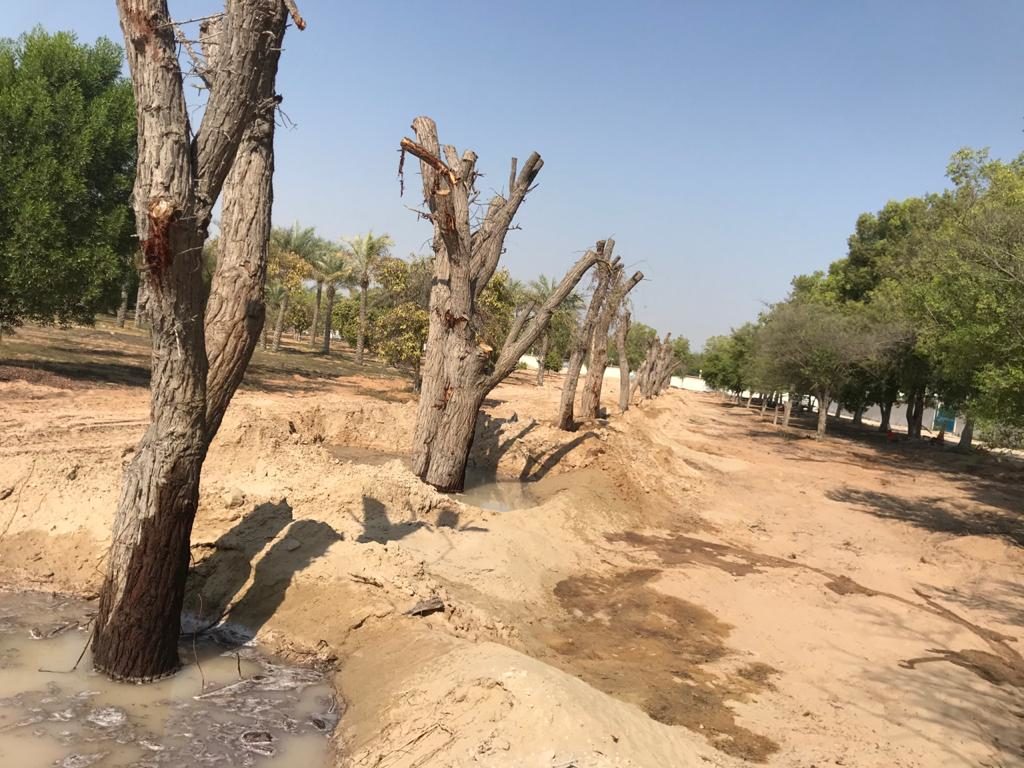Environment Agency – Abu Dhabi And Etihad Railensure The Highest Sustainability Standards Across Construction Of Rail Network

The Environment Agency – Abu Dhabi (EAD) and Etihad Rail, the developer and operator of the UAE’s National Rail Network, have collaborated in implementing sustained environmental stewardship during the planning and construction of the Etihad Rail Project, one of the largest infrastructure projects in the UAE. The first phase of the project is already operational, while the second phase will extend across the UAE from its border with Saudi Arabia into Abu Dhabi and further Dubai and Sharjah into Fujairah on the east coast.
Since the early stages of the project, the two entities have collaborated on a range of initiatives, including habitat conservation, animal protection, and rehabilitating native trees and shrubs across the emirate of Abu Dhabi to conserve UAE’s diverse natural heritage.
As part of collaborative efforts, EAD and Etihad Rail are actively relocating native and high conservation value trees, such as Sidr and Date Palms, with over 550 Ghaf trees being successfully translocated and a further 590 trees planted. Additionally, EAD and Etihad Rail are constructing wildlife corridors along the nearly 1,200 km stretch of the railway line and are integrating 95 animal crossings and culverts across the project.
Eng. Shaikha Al Hosani, Executive Director of the Environment Quality Sector at EAD said: “I could not be prouder to have partnered with Etihad Rail during the construction phase of the new railway. This important partnership will ensure development of a critical infrastructure while ensuring the protection of the environment. Etihad Rail is aligned with the vision of EAD and our government and prioritises safeguarding our natural resources. Through diligent impact assessments and a flexible approach, on behalf of Etihad Rail, we were able to realign the railway to avoid our critical habitats, plants, and animal species.”
She added: “EAD will continue to work closely with Etihad Rail and build even stronger partnership as we move in a new era of growth and sustainable development with environment as one of its fundamental pillars. A fully functional rail network will help reduce our Carbon emission footprint and will help mitigate climate change impacts”.
Mohamed Almarzooqi, Executive Director of Rail Relations Sector at Etihad Rail said: “Committed to being a ‘Good Neighbour’ to the local community surrounding the railway network, Etihad Rail enforces leading best practices in sustainability to preserve the diverse natural heritage of the UAE. At Etihad Rail, we actively support heritage conservation and eco-tourism projects that act as a steward for nature and the environment, creating new social and economic opportunities and boosting quality of life.”Etihad Rail is playing a significant role in the UAE’s sustainable development and is actively contributing to environmental preservation. With one fully loaded train equivalent to taking 300 trucks off the road and producing daily 70-80% less CO2 emissions than the trucks required to transport the same tonnage, the network is reducing pollution, lowering fuel and maintenance costs,and increasing road safety.
PROTECTING ANIMAL HABITATS
EAD and Etihad Rail have assigned a dedicated team of environmental impact assessment specialists, ecologists, air and noise scientists, as well as forestry specialists to manage complex review process for the project’s environmental studies. They have also carried out extensive studies to understand species movement routes across the construction path of the project.
Habitat surveys were conducted, in line with Etihad Rail’s and EAD’s priority to protect and conserve Abu Dhabi’s pristine natural heritage. In addition, detailed environmental baseline surveys were carried out for the project’s terrestrial ecology that assessed species including gazelles and Dhub, as well as their habitats along the length of the railway to identify their natural corridors.
Accordingly, EAD and Etihad Rail incorporated the design and construction of culverts and wildlife crossings that allows the animals to move beneath the track safely. The two entities also carefully organised the transport of wildlife to other suitable and protected habitats. So far over 300 animals, including 242 Middle Eastern Short-Fingered geckos, 24 Baluch rock gecko, five Saw-faced vipers, have been relocated, among others.
SAFEGUARDING WILDLIFE RESERVES
Al Wathba Wetland Reserve is an EAD protected area and is located approximately 270 m away from the proposed route of the railway. Al Wathba Wetland Reserve was established in 1998 and was declared as a Ramsar site in 2013. It is also listed on the IUCN Green List of Protected and Conserved Areas – the first protected area in the UAE to receive this recognition. Both EAD and Etihad Rail have adopted strict measures to reduce the impact on the species inhabiting the Al Wathba Wetland Reserve in Abu Dhabi, including migratory birds. These measures included speed limitations for the trains when passing by Al Wathba, and a‘no-horn zone’ to reduce noise disturbance.
During construction, a buffer zone has been created between works and the boundary of the reserve to reduce dust pollution.In addition, the project’s schedule was calibrated to avoid construction during the breeding season of birds and in particular Greater Flamingos. Etihad Rail has furthermore invested in state-of-the-art trains, which use sophisticated noise and vibration controls, engineering design, and suitable equipment to considerably reduce noise-pollution from the train.
In line with nature and wildlife stewardship efforts, key learnings from the development of Stage One were implemented to further enhance environment protection in Stage Two. For example,the size of reptile culverts was increased by 300mm in Stage Two, providing easy passage for reptiles and enhancing the maintenance work along the railway.
Additionally, to support the Houbara bustard, a vulnerable bird species which was reintroduced to the Al Dhafrah region in 2008, EAD and Etihad Rail are collaborating with the International Fund for Houbara Conservation (IFHC) for new feeding grounds for the bird. Spanning over an area of 500,000 square meters, conservationists will plant 750 Arak trees and 3,200 plants in the new grounds for feeding and habitation. The feeding grounds will support Houbara, which migrate into the UAE from Asia, as an ongoing international effort to protect this vulnerable species.





